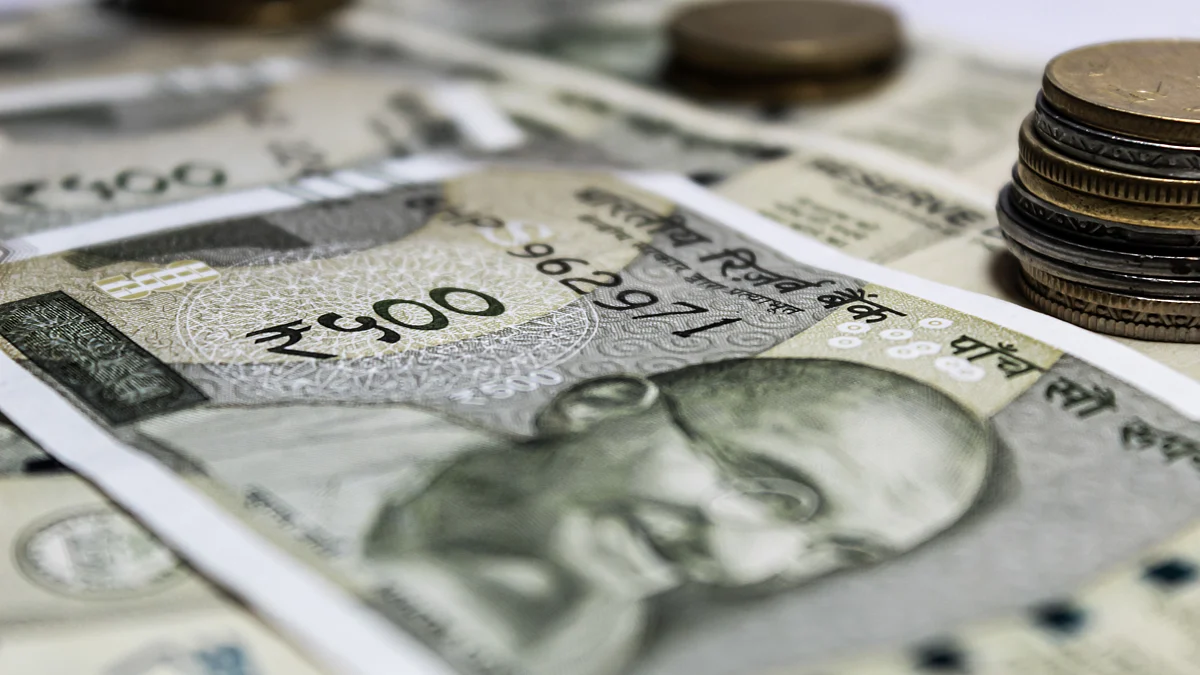- Arvind's Newsletter
- Posts
- Arvind's NewsletterIssue No. #1044
Arvind's NewsletterIssue No. #1044
This will be the last issue of 2024. The first issue of 2025 will be on Jan 3. Best wishes for a healthy, happy and fulfilled New Year
1.Yesterday was sad day with passing away of former Prime Minister Manmohan Singh.
Singh was one of India’s longest serving PMs and also widely considered as one of key architects of India’s liberalising economic reforms, as premier from 2004-2014 and before that as finance minister. Read below a memoir about him by senior economic journalist TN Ninan and an obituary in the Financial Times.
2.JSW Neo Energy to acquire O2 Power at enterprise value of $1.47 billion
JSW Neo Energy , a wholly-owned subsidiary of JSW Energy Ltd, is set to acquire renewable energy platform O2 Power at an enterprise value of $1.47 billion.
European alternative asset manager EQT and Singapore’s Temasek hold 51% and 49%, respectively, in O2 Power that has a capacity of 4.7 GW renewable energy. They both will exit the company, founded by former ReNew Power executives Parag Sharma, Peeyush Mohit, and Rakesh Garg, after the transaction.
3.China is pressing ahead with plans to construct a mega dam near the contested border with India, a colossal undertaking that could generate three times as much power as the Three Gorges Dam.
The government approved the construction of “a hydropower project” in the lower reaches of the Yarlung Tsangpo river in Tibet, the official Xinhua News Agency reported, without giving more details.
Previous reports indicated the dam would be the world’s biggest and require 1 trillion yuan ($137 billion) of investment — making it one of the costliest infrastructure projects ever. The dam could also become a source of renewed tension between China and India. Their relationship has just stabilized after a four-year stalemate over a June 2020 border clash.
4.Indian rupee reports steepest one day fall since February 2023
The Indian rupee fell the most in almost two years as month-end dollar demand by importers weighed on the currency.
The rupee dropped 0.6% to a fresh record low of 85.7437 per dollar on Friday, marking its largest single-day loss since February 2023. Concern over the nation’s trade deficit and slower economic growth have exerted pressure on the rupee, along with the dollar’s global strength.
The rupee, which is among the least volatile currencies in the world, has been setting new record lows this month as the dollar’s resurgence weighed on emerging-market currencies. Traders are watching the new central bank governor’s approach to foreign-exchange market interventions, which may allow for more volatility in the currency.
5.China’s EV sales set to overtake traditional cars years ahead of west
Chinese EV sales are expected to grow 20% year-on-year to more than 12 million units in 2025, the Financial Times reported, far above Beijing’s internal forecasts.
Meanwhile, EV sales growth in Europe and the US is slowing: Consumers are worried tax credits and subsidies for EVs may soon disappear as governments tighten their belts, while trade restrictions limit those markets’ access to cheap Chinese EVs.
The upward trajectory signals China’s status as a leader in developing green tech, one renewables industry analyst said: “They want to electrify everything… No other country comes close.”
6.Finnish authorities seized a Russian oil tanker suspected of damaging undersea electricity and internet cables.
It’s the latest in a series of suspected attempts to sabotage cables running on the Baltic Sea floor. The European Union is reportedly mulling sanctions targeting Russia’s so-called “shadow fleet” — unregistered clandestine vessels that often carry sanctioned Russian oil and which Brussels believes are being used to deliberately damage undersea cables. But international law is “neither formulated to adequately protect subsea data cables from sabotage nor hold perpetrators accountable,” Carnegie Endowment researchers argued, and it’s unclear what the EU can do to curb these incidents. Meanwhile, NATO is testing ways to protect internet communications by using satellite based solutions, IEEE Spectrum reported.
7.Riding With a Trucker, Witnessing India’s Past and Potential; New York Times
In India, a NY Times reporter went on a journey with a long-haul trucker. It revealed how far the country’s infrastructure has come — and how far it has to go.
8.Olympics surfer to Donald Trump: 12 of the most striking images of 2024
From the awe-inspiring photo of a surfer in Tahiti to the iconic shot of US President-elect Trump captured after an assassination attempt, these are 12 of the most eye-catching images of the last year.
9.Last week Zakir Hussain, one India’s best loved and innovative musicians passed away.
A virtuoso tabla player with a global following, he transformed the range and appeal of the hand drums that are the main percussion instrument in Hindustani classical music.
Moving between different projects, he worked with a remarkable variety of musicians, including Ravi Shankar, George Harrison, Van Morrison, John McLaughlin, Pharoah Sanders and Mickey Hart of the Grateful Dead. Hussain started out as a teenage sensation in India, and ended in equally triumphant style – in February 2024 he won three Grammys in one night, a first for an Indian musician.
Read below an obituary in the New York Times and a tribute by Shruti Rajagopalan in her blog.
10.Four AI predictions for 2025; Richard Waters in the Financial Times
There was nothing new in artificial intelligence in 2024 that matched the sheer “wow” factor of using ChatGPT for the first time, but rapid improvements in the underlying technology still kept the field humming. For 2025, this is how I see things panning out.
Will AI development hit a wall?
In 2025, that momentum will fade. Even some of the tech industry’s biggest optimists have conceded in recent weeks that simply throwing more data and computing power into training ever-larger AI models — a reliable source of improvement in the past — is starting to yield diminishing returns. In the longer term, this robs AI of a dependable source of improvement. At least in the next 12 months, though, other advances should more than take up the slack.
The most promising developments look like those coming from models that carry out a series of steps before returning an answer, allowing them to query and refine their first responses to deliver more “reasoned” results. It is debatable whether this is really comparable to human reasoning, but systems such as OpenAI’s o3 still look like the most interesting advance since the emergence of AI chatbots. Google, which regained its AI mojo late in the year after spending two years struggling to catch up with OpenAI, also showed how the new agent-like capabilities in AI could make life easier, such as tracking what you do in your browser and then offering to complete tasks for you. All these demos and prototypes still need to be turned into useful products, but they at least show that there is more than enough in the labs to keep the AI hype going.
Will AI’s ‘killer app’ emerge?
For most people, the rise of generative AI has meant constantly seeing prompts offering to complete your writing for you or edit your photos in ways you had not thought of — unsought, occasionally useful tools that fall well short of transforming your life. Next year is likely to bring the first demonstrations of apps that can intervene more directly: absorbing all your digital information and learning from your actions so that they can act as virtual memory banks or take over entire aspects of your life. But, concerned about the unreliability of the technology, tech companies will be wary about rushing these out for mass use — and most users will be equally wary about trusting them. Instead of true killer apps for AI, this means we will be left in the “AI in everything” world that technology users have already become accustomed to: sometimes intrusive, sometimes helpful, and still not quite providing the really new experiences that would prove the AI era has truly arrived.
Will Nvidia’s GPUs still rule the tech world?
The chipmaker’s huge profits have made it the target of the most powerful tech companies, most of which are now designing their own AI chips. But Nvidia has been moving too fast for rivals, and while a quarter or two could be bumpy as it goes through a major product transition, its Blackwell product cycles should carry it through the year comfortably ahead. That does not mean others will not make inroads. According to chipmaker Broadcom, three of the biggest tech companies are to use their in-house chip designs for supercomputing “clusters” with 1 mn chips each in 2027. That is 10 times the size of Elon Musk’s Colossus system, thought to be the largest cluster of AI chips currently in use. Even as its market share starts to erode, though, Nvidia’s software still represents a considerable moat for its business, and by the end of the year it should be on the verge of another important new product cycle
Will the stock market’s AI boom continue?
With Big Tech in the midst of an AI race that its leaders believe will determine the future shape of their industry, one of the main forces behind the AI capital spending boom will remain in place. Also, as some companies start to claim big — if unproven — results from applying the technology in their own businesses, many others will feel they have to keep spending, even if they have not worked out yet how to use AI productively. Whether this is enough for investors to keep throwing their money at AI is another matter. That will depend on other factors, such as the stock market’s confidence in the deregulatory and tax-cutting intentions of the new Trump administration and the readiness of the Federal Reserve to continue with monetary policy easing. It all points to a highly volatile year, with some big corrections along the way. But with enough liquidity, Wall Street could succumb to AI hype for some time yet.










